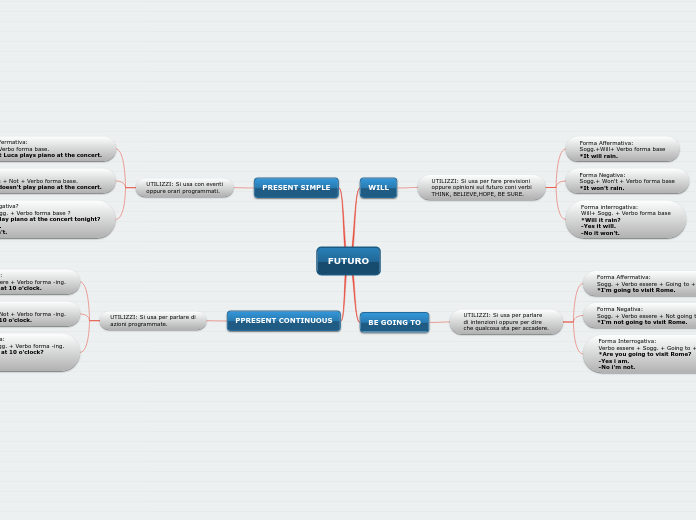by Giorgio Bertino 4 years ago
331
FUTURO
The text explains the use of various English tenses to discuss future events. The present continuous tense is used for scheduled actions and is formed with the verb "to be" plus a verb in the -ing form.

by Giorgio Bertino 4 years ago
331

More like this